 Weird Stuff
Weird Stuff  Weird Stuff
Weird Stuff  Mysteries
Mysteries 10 Tragic Disappearances and Deaths in Joshua Tree National Park
 History
History 10 Ways Childhood Really Sucked in the Old West
 Music
Music 10 Name Origins of Famous Bands from the 1990s
 Religion
Religion 10 Biggest Turnarounds by the Catholic Church
 Weird Stuff
Weird Stuff 10 Unbelievable Times Laws Had Unintended Consequences
 Humans
Humans Ten Historic Women Who Deserve Way More Credit Than They Got
 Movies and TV
Movies and TV 10 Films That Spawned Major Lawsuits
 History
History Ten Times Towns Were Wiped Off the Face of the Earth
 Creepy
Creepy 10 of the Most Disturbingly Haunted Public Houses in the UK
 Weird Stuff
Weird Stuff 10 Niche Subcultures That Are More Popular Than You Might Think
 Mysteries
Mysteries 10 Tragic Disappearances and Deaths in Joshua Tree National Park
 History
History 10 Ways Childhood Really Sucked in the Old West
Who's Behind Listverse?

Jamie Frater
Head Editor
Jamie founded Listverse due to an insatiable desire to share fascinating, obscure, and bizarre facts. He has been a guest speaker on numerous national radio and television stations and is a five time published author.
More About Us Music
Music 10 Name Origins of Famous Bands from the 1990s
 Religion
Religion 10 Biggest Turnarounds by the Catholic Church
 Weird Stuff
Weird Stuff 10 Unbelievable Times Laws Had Unintended Consequences
 Humans
Humans Ten Historic Women Who Deserve Way More Credit Than They Got
 Movies and TV
Movies and TV 10 Films That Spawned Major Lawsuits
 History
History Ten Times Towns Were Wiped Off the Face of the Earth
 Creepy
Creepy 10 of the Most Disturbingly Haunted Public Houses in the UK
10 Terrors Of The Tyrant Tamerlane
He was one of the most evil, most dangerous humans who ever walked the Earth, yet he was praised and honored for centuries onstage and in text by people he would likely have murdered if given the chance. Aside from some obscure Victorian-era plays and poems, not much is known in the Western world about Tamerlane (aka Timur), but he is well-known to most historians.
The name “Tamerlane” comes from “Timur the Lame.” He was said to have received crippling arrow wounds for stealing sheep as a child. He grew to become a Turkic-Mongol warlord whose power base arose from the smoldering ashes of the disintegrating Mongol Empire in the late 14th century. He was extremely cruel and highly intelligent.
His tactical success at harvesting the soft, civilized human cattle of the wealthy cities of Central Asia drew many vicious men to his banner. He was a land pirate with the world’s strongest army at his command, capturing and killing the strongest and most cultured cities of Islam—cities that were much larger, more sophisticated, more religiously tolerant, and much better-defended than any in Europe at that time. He killed for loot, personal glory, and the dark joy that wicked men absorb from inflicting pain on others. He was the worst of the least recognized psychopaths in history, and his story provides a lesson and a warning for all humanity. Yet, he was also highly praised onstage and in text by respectable Western Christian contemporaries, and the reason why provides an interesting tale in itself.[1]
Keep in mind that the horrific events in this list were engineered by a man who could not properly hold a sword, nor physically mount a war horse without assistance.
10 Skull Pyramids Of Isfahan
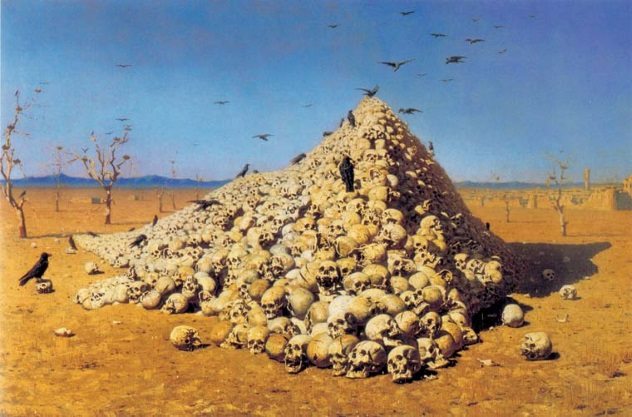
Isfahan was a Persian city that was artistic, prosperous, multicultural, and intellectual. Religious freedom and civil coexistence nurtured an environment where arts, medicine, music, philosophy, and architecture prospered. (Such was typical with most of Tamerlane’s targets.) What the city lacked at this time in their history was an army of very hard men to defend it. One medieval afternoon, when the citizens saw the sky-consuming dust cloud of Tamerlane’s many thousands of equestrian murderers approaching in battle formation outside the gate, they wisely surrendered without a fight.
Tamerlane acquitted himself at this time in an uncharacteristically sane manner and saved the city’s residents from needless slaughter. He left a garrison of troops to collect initial victory taxes and the booty from relatively minor looting. He camped his main army outside the city to plan future conquests and collect and distribute the loot.
Some of the ballsier, angrier, and obviously younger citizens of the city took umbrage with this exception to their proud history of resisting invaders—not to mention the high taxes he imposed upon them—and successfully killed Tamerlane’s 3,000-man contingent stationed inside the city walls while the warlord was camped outside. The citizens were at first ecstatic at the deed, until the horror of the reality of what they had done began to sink in. When Timur got wind of this stupidly treacherous act, he unleashed a terrible vengeance upon the city.
He ordered that every man, woman, and child were to be killed. His troops were given a quota for decapitated heads of the citizenry to be counted. Those soldiers who did not produce the quota would lose their own heads. A historian recorded that 28 towers of 1,500 skulls each were erected in the city before the man who recorded the act stopped the count in disgust and horror.
Roughly the entire population of 70,000 to 100,000 people (minus the well-hidden survivors who would soon turn cannibal) were cut to bloody ribbons. Even the cattle, dogs, and cats of the town were put down. Skull pyramids, though not new to history, were to become Tamerlane’s primary modus operandi in future conquests.[2]
9 History’s Only Real Boogeyman
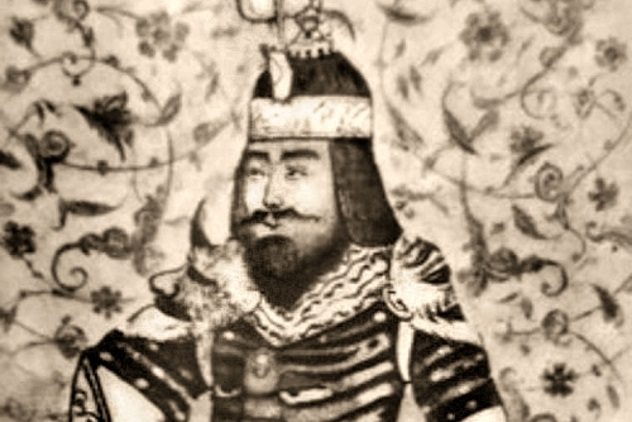
Spartacus, the leader of the slave rebellion, and Hannibal, the brilliant and deadly general, were the boogeymen for children of ancient Rome.
The ancient Greeks had the real-life Minotaur, King Minos of Crete. The Minoan living structures resembled a honeycomb of apartments with no hallways; one can imagine a real-world labyrinth. Imagine also the fact that the Minoans were most likely cannibals, eating the hostages/captured children who were offered as tribute to be sacrificed to their strange gods. It is not impossible to make the connection to the legend of the Minotaur, who ate human flesh and lived in a labyrinth, a “boogeymen of the ancients.”
But to really understand the what a boogeyman is, we have to single out an instance of Timur’s wrath as it unfolded during his revenge upon Isfahan, as recorded by a Bavarian prisoner who witnessed what happened after the initial convulsion of slaughter:
Then he ordered the women and children to be taken to a plain outside the city, and ordered the children under seven years of age to be placed apart, and ordered his people to ride over these same children. When his counsellors and the mothers of the children saw this, they fell at his feet, and begged that he would not kill them. He would not listen, and ordered that they should be ridden over; but none would be the first to do so. He got angry and rode himself [among them] and said, ‘Now I should like to see who will not ride after me?’ Then they were obliged to ride over the children, and they were all trampled upon. There were seven thousand.[3]
Under different circumstances, the death of children as a by-product of the evil acts of men is pretty much just that: a by-product—collateral damage sustained in the pursuit of a further goal, be it conquest, looting, or battlefield glory. What Tamerlane did was far different. He is probably history’s only real boogeyman for children because he specifically targeted children in this instance and personally led the act, rather than handing down a dark order to be carried out by others, such as with Hitler or Stalin.
8 Beheading Of Badghdad
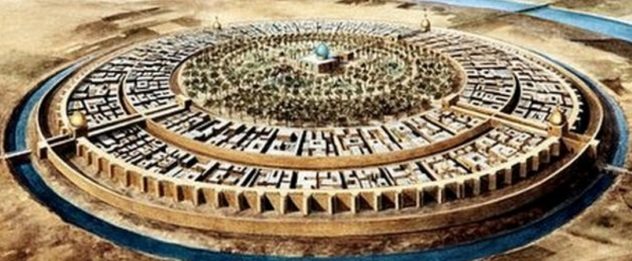
Syrian author Ibn Arabshah noted the phase of Tamerlane’s career that included the siege of Baghdad as a “pilgrimage of destruction,” and well-said he is. In the world of the educated, enlightened, and culturally rich cities of Asia, Baghdad was considered a pearl among pearls and probably the finest capital city of Islam (though there were plenty of Jews, Christians, and other religious minorities living in relative harmony within the walls). The troops of Tamerlane descended upon this cosmopolitan gem “like moths, locusts and ants,” and the city prepared for a terrible siege.
At first, the city was able to hold out valiantly, and Timur lost many men, but defeat was inevitable.
Tamerlane’s army had passed through the area before but had left it unmolested after the city’s leader and protector, Sultan Ahmad, had fled in terror and left his treasure there open to capture. During his cowardly exile, however, he had unwisely chosen to insult Timur’s physical handicaps and return to recapture the city while Timur was off on other conquests. Tamerlane would not stand for this. He marched on Baghdad.
When the residents of Baghdad saw Tamerlane’s immense army camped outside their walls, they then saw their city as “no longer [ . . . ] the house of peace, but as the palace of hell and discord.” The chilling sound of grating could be heard as the sappers dug underneath the city’s walls yard by yard. The panicked people struggled desperately to repair the walls as they began to crumble about them in the face of the sappers.
It is said that during the summer siege, the air was so hot that birds fell out of the sky mid-flight. This seems a bit of dramatic hyperbole, but is also said (from more reliable sources) that armor-clad troops manning the walls, boiling in the desert heat, would prop their helmets up with a stick so as to appear to still be defending the walls, and then they would head home to get out of the heat. When Timur saw this evident weakness of the garrison’s discipline exposed, he planned a general attack. The main assault began after six weeks and one day of siege.
An order was given, and countless scaling ladders and troops scurried over the walls like a river of army ants. The Tigria (Tigris River) offered no sanctuary or means of escape. Citizens attempted this route but were cut down by archers. The governor and his daughter made a desperate attempt to escape, but their boat was shot at and overturned. They both drowned.
As in India, troops were given a quota of heads to collect for the skull pyramids that were to be built. Two heads per soldier was demanded, and to fall short of the quota meant the loss of the soldier’s own head. Timur ordered that every personal dwelling be destroyed and that, “not one single house was to be left in the city unrazed.”
No quarter was given, not even to women, old men, or children. 90,000 human beings—mostly Muslims—were gutted that day. 90,000 skulls were erected into 120 stinking towers throughout the city of Baghdad.[4]
7 Enemy Of The Hindus—Industrial Slaughter In Delhi
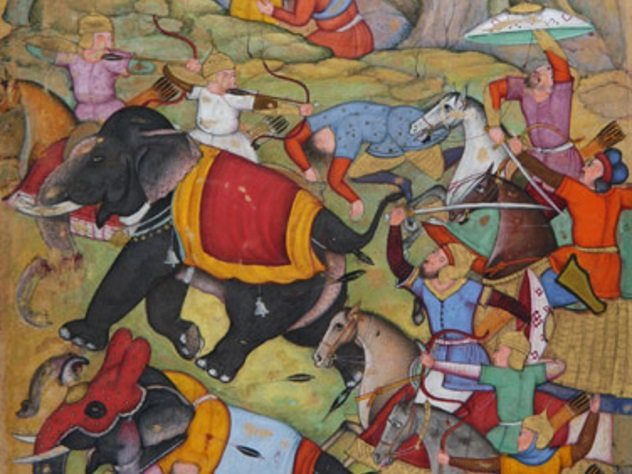
The Mohammedan conquest of India was probably the bloodiest story in history.—Historian Will Durant
Timur stated his motive for the invasion of India was that there was too much religious tolerance being shown to the Hindus by the sultans of Delhi. The aim of his invasion—on paper—was to correct this situation.
In the process of wakeboarding on the blood of his Northern Indian rampage, Timur had captured around 100,000 Hindu prisoners. He was eventually confronted in the field by a numerically superior force, but it was led by Sultan Nasir-u Din Mahmud, whose armies were already weakened by internecine civil war. The huge number of prisoners under Tamerlane’s mercy presented a potential fifth column if they decided to revolt while he was engaged in the field with the Sultan’s forces. He decided to take no chances. He cold-bloodedly ordered that all 100,000 Hindus were to be put to death preceding the battle for Delhi.
The order is detailed to an extent in Timur’s memoirs:
I proclaimed throughout the camp that every man who had infidel prisoners should put them to death, and whoever neglected to do so should himself be executed and his property given to the informer. When this order became known to the ghazis of Islam, they drew their swords and put their prisoners to death. One hundred thousand infidels, impious idolaters, were on that day slain. Maulana Nasiruddin Umar, a counselor and man of learning, who, in all his life, had never killed a sparrow, now, in execution of my order, slew with his sword fifteen idolatrous Hindus, who were his captives.
Although weakened, the fielded force of the Sultan was nevertheless formidable; it included 120 war elephants with poisoned tusks and chain mail armor. As the elephants charged his lines, Timur countered the charge with an act that was pure evil genius. He had many camels loaded with wood, set on fire, and prodded into charging the enemy lines, burning alive and howling in agony. This spooked the elephants so much that they turned around and charged their own lines, disrupting the unit integrity of the Indian army. Tamerlane was able to capitalize on this and achieved victory on the field.
The nightmare faced by the citizens of Delhi cannot be imagined today. In full awareness of what awaited outside the city gates, Hindu men burned their homes, with their women and children inside, and rushed into the battle, where they were killed.
After his utter destruction and massacre at Delhi, Timur returned to Samarkand with 90 elephants laden with precious stones on their backs. Tamerlane’s capital city of Samarkand, once ironically razed and pillaged by Tamerlane’s idol, Genghis Khan, was being built into the new swollen blood jewel of Central Asia. Its mosques, temples, and civil buildings were draped with the bounty of the Hindu holocaust and shone at night long distances in the desert with a pulsing glow that was pregnant with the promise of pain for all civilization.[5]
6 Enemy Of The Christians
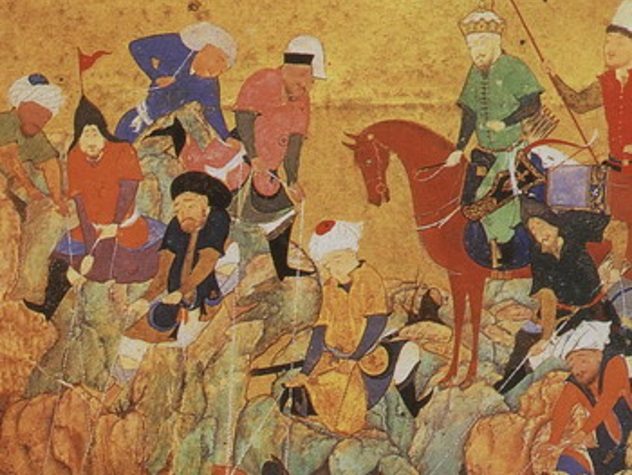
The Knights Hospitaller held one of the last remaining Christian crusader outposts in Anatolia at Smyrna. They had been one of the very few groups of Christian warriors to hold out against the Ottomans and the Turkish horde, so when Tamerlane arrived and offered to leave them alive and in peace (which was out of character), they felt confident in refusing the kind offer. The walls were attacked with siege engines and undermining, and stones were dropped in the harbor entrance to prevent reinforcements from assisting. The outpost fell, and all were put to death violently, with their heads mounted on stakes after the victory.
Sivas, in what is now Turkey, came under attack in 1399. The town’s garrison was mostly Christian Armenian soldiers. Tamerlane told the defenders of the city that, if they surrendered, no blood would be shed. They surrendered. He kept his word to the defenders—by burying 3,000 of them alive.
Timur had invaded Georgia a total of seven times in his campaigns against Christians in that area. King Bagrat V of Georgia proved to be a hard nut to crack, and for years, Timur had attempted to persuade him to convert himself and his country to Islam, but the king had a strong reign and refused. The destruction wrought by Timur’s consistent ravaging of his country, however, destabilized his hold on power, and he lost the throne. He devised a scheme wherein he would pretend to convert but remain a Christian secretly.
His ruse convinced Timur, and Bagrat was allowed to retake his throne, being offered 12,000 soldiers by Timur to help convert the rest of his country. The king told his son what he had done and ordered him to ambush Timur’s army before it arrived at the capital. This was done, and the army was destroyed.
Timur was furious and swore dark revenge. His troops marched through the countryside, devastating, burning, and killing all before them. He and his army arrived at the town of Kvabtakhevi, where the people had hidden in a monastery for fear of their lives. The young and strong were carried away from the town; the old and weak were run through with swords. The remaining townsfolk were given an ultimatum: to convert immediately or be burned alive in their monastery. The Christians chose martyrdom and a horrible death, singing psalms to God as the flames devoured their bodies.[6]
Southern Georgia and Armenia suffered harshly from Timur’s attention. The area was destroyed systematically in 1399, with vast areas being depopulated. More than 60,000 Christian slaves were taken into captivity when Tamerlane overran Armenia and Georgia again in 1400. Timur returned yet again in 1403 to revisit devastation to these Christian lands that were still suffering from his previous visits. The Eastern Church, aka the Nestorian Christian communities of Asia, were virtually wiped from history by Tamerlane, except in Iraq, where some pockets still survive today.
5 Enemy Of Islam—The Rape Of Damascus

Tamerlane’s hordes were marching deep into Syria in December 1400. The pitiful citizens of Damascus may have witnessed, with great dread, fingers of charnel smoke from the shredded, burned cities of Aleppo and Hama rising up into the sky behind the silhouetted army that approached them. The sultan of Egypt brought a fierce Mameluke army to defend the city but returned after a few skirmishes. Usurpers were attacking the Egyptian throne in their absence, and they had to go back to defend it.
Facing impossible odds without the famed Mameluke warriors to defend them, the city nevertheless held out bravely for about a month before surrendering. Tamerlane received a massive ransom of plunder from the city and then turned his troops loose.
Much of the population suffered horribly. They were crushed in wine presses, bastinadoed, burned, or otherwise tortured. Rape was extremely prevalent. Many were enslaved. Many children were left to starve when their mothers were carried off into slavery, and Tamerlane marched the cream of the city’s artisans, craftsmen, and skilled workers back to Samarkand.[7]
Tamerlane may have been a self-proclaimed Muslim, but some of his worst atrocities were carried out against his fellow Muslims, particularly during his campaign in Syria. His crimes in Damascus earned him the status as an official enemy of Islam from the Muslim leaders of the time.
In some parts of the world even now in the 21st century, the worst insult one child can say to another child is to call him “Timur.” It is a very stigmatic and hateful reference to the bastard offspring of the rape victims of the city and their modern descendants, who may show Mongol features in the face. It is quite something to say that a 600-year-old tragedy can bring tears, anger, and discord this far separated in time from the initial act.
It may also be noted that Damascus had long been famed for the high quality of their battle weaponry industry. Swords forged from Damascus steel were the envy of warriors worldwide. Even Islam’s most hated crusader enemies had praise for their craft. Following Timur’s depredations, all the finest sword smiths of the city were marched east to Samarkand to set up shop for the warlord. The industry never returned in strength, and Damascus steel became a sad, forgotten byword, finding its final resting place in unread library scrolls, forlorn poems, and tearful eyes of the city’s survivors and their descendants.
4 Enemy Of The Civilized World

Genghis Khan was responsible for millions of deaths and receives the top crown as the worst mass murderer in history, but Tamerlane was a very close and respectable second. Hitler had help from Stalin numbers-wise, and Mao’s Great Social Experiment ended in high numbers of deaths due to incompetence and the distorted social views of communism, not direct cruelty. Tamerlane was far different. He rarely left anything resembling a functional government in any of the places he conquered, and regional trade was never much of a concern. His armies looted, pillaged, and murdered for the sake of looting, pillaging, and murdering. Religious freedom was not a hallmark of Tamerlane’s empire. For that matter, his tolerance for his fellow Muslims could be shown by his ripping the guts out of the finest cultured and glittering cities of the medieval Islamic world, leaving behind an ocean of blood, tears, and horror. Even now, in the second decade of the 21st century, over 600 years later, most of those cities have not yet fully recovered even a fraction of their former status among the more advanced civil communities of the world.[8]
In some ways, Timur can be considered to be even worse than Genghis Khan. Numerically, the body count was much higher under Genghis, but life in their respective empires was very different. In Genghis Khan and the Making of the Modern World, author Jack Weatherford pointed out that the Mongol Empire under Genghis “created the nucleus of a universal culture and world system. [ . . . ] With the emphasis on free commerce, open communication, shared knowledge, secular politics, religious freedom and coexistence, international law, and diplomatic immunity.”
On the other hand, 19th-century historian Peter Fredet wrote: “Never assuredly were there deeds of cruelty so awful and so multiplied, perpetrated either by Alexander-the-Great, or any other conqueror except Tamerlane.” British historian John Joseph Saunders noted: “Till the advent of Adolph Hitler, Timur (or Tamerlane) stood forth in history as the supreme example of soulless and unproductive militarism.” Historians have estimated that his campaigns caused the deaths of 17 million people, which, at that time, was about five percent of the world population, leading to a truly horrific legacy.
It wouldn’t surprise many that lawyers today can credit Tamerlane as a teacher of one small aspect of modern law. The incident in Sivas, where the defenders surrendered under the promise of “no blood would be shed” but were buried alive instead of being stabbed or cut is not only a worthy mention here because of its historic cruelty. This incident has become an anecdote for defining the “origin of contract theory and interpretation,” a rule of law taught today to law students the world over. Keeping to the letter of the law does not necessarily demonstrate that the spirit of the law has been conveyed. The spirit of the law must be demonstrated, a lesson that the defenders of Sivas learned the hard way.
Being buried alive by Tamerlane was not unique to the Sivas garrison. In a town called Sabzawar, Tamerlane suppressed a revolt by taking the town in a storm of an onslaught. Instead of his trademark skull pyramids, he made an example for future would-be rebels by taking 2,000 prisoners and plastering them one on top of another (while still alive, mind you) into a living, screaming tower of kicking, flailing limbs and horror “so that these miserable wretches might serve to deter others from revolting.”
3 Battle Of The Monsters—Ankara
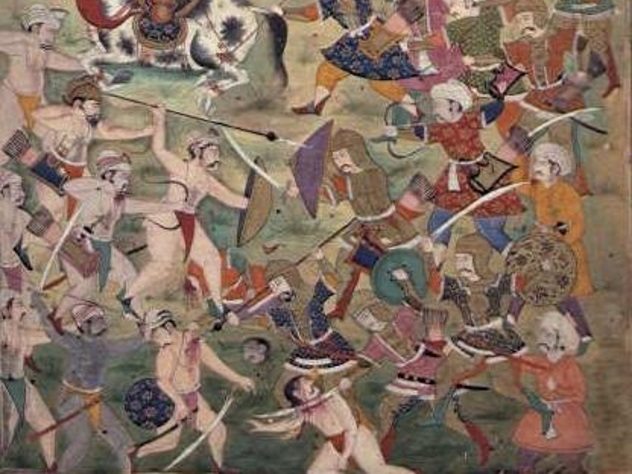
It has been said that the two biggest dogs in the neighborhood will eventually fight. Such was the case with Tamerlane and the Ottoman sultan Bayezid.
Initially, some fairly innocuous diplomatic notes were passed between the warlords concerning border town disputes, refugees of one being harbored by the other, and so on, but things quickly turned ugly. Bayezid’s diplomatic attitude toward Tamerlane wasn’t helped by the fact that one of his sons, Prince Ertoghrul, was killed by Timur’s troops during the capture of Sivas, an Anatolian town belonging to the Turks.
The tone of the correspondence became more abrasive, culminating in Bayezid opening a letter with, “Know, O ravening dog named Timur,” questioning his courage and saying, “If thou hast not courage to meet me in the field, mayest thou again receive thy wives after they have thrice endured the embraces of a stranger.” In other words, “You are a coward, and when I capture you, I will make you watch as my troops gang rape your wives.”
Two things inadvisable to do to Timur would be threatening to have your soldiers gang rape his wives and calling him a coward. It was definitely on at that point.
Bayezid received word that Timur’s force was approaching from the east in Asia Minor, making a beeline for his capital at Angora (modern-day Ankara in Turkey). To meet Tamerlane as far from the capital as possible, Bayezid sped with all haste in that direction, not stopping to replenish supplies—especially water—through a series of forced marches in desert terrain.
Timur, meanwhile, had moved his massive army south, then west, and finally north, ending up between Bayezid and his capital. He began to lay siege. During the whole march, Tamerlane had been grazing his horses, refreshing his water stocks, and scorching the earth behind him, keeping his army fresh while denying the same to his enemy in his own territory.
Tricked and enraged by this large-scale flanking maneuver, Bayezid about-faced and started another series of forced marches to relieve his beloved Angora. His troops were suffering immensely from forced desert travel and lack of drinking water, but he looked to refresh them just before the battle.
When Timur’s scouts reported the approach of the sultan’s tired troops, he lifted the siege and deployed his army northeast of Angora in a town called Cubuk and deployed his engineers to create more misery for the enemy, still resting his troops while battle preparations were made. When Bayezid’s army reached the site of the battle, they were exhausted, and some were dying of thirst, but they looked to refresh themselves at the nearby water source. As they greedily swarmed on the river, they watched in horror as it dried to a trickle. Timur’s engineers had been hard at work damming that very source and timing the evaporation to coincide with the arrival of the Ottoman army. The only remaining nearby water sources were small wells poisoned by Timur’s men.
The two armies were massive. Some say as many as 1.6 million for Timur and 1.4 million for Bayezid. This is probably doubtful, but they were both extremely huge.
The battle started off at a rough stalemate until a large contingent of Bayezid’s Tatar cavalry switched sides and turned on his flank. Timur, himself having Tatar blood, had spent months sending his spies to urge tribal loyalties among Bayezid’s Tatar contingent and had promised rich booty in exchange for their betrayal of the sultan. The timing was perfect, and the tide decisively turned in Timur’s favor.
Bayezid refused to admit defeat and fought on bravely, surrounded by his loyal Janissary bodyguards until his army collapsed, and he was forced to flee. He was captured when his horse was killed underneath him. His sons fled, and his wife, who was in the follower’s camp, was also captured.[9]
Victory against the Ottomans had seemed impossible for the best coalition of armies in Europe, and Timur, the lame conqueror, made it look easy. And he was 66 years old when he did it.
2 Ottoman Becomes An Ottoman
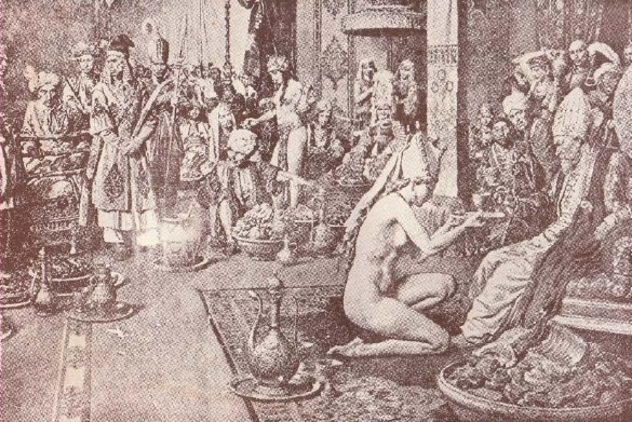
The Ottoman Turks were the terror of Europe and referred to as the “scourge of the world.” They had the last defensive bastion of Christian Europe under siege (the city of Constantinople), and had a very good chance of breaking through into Europe when Timur showed up on the scene. The Turkish shield was barely dented by the European sword. The hated Turks were at the peak of their power, and the main boogeyman in every Christian child’s nightmares was about to break out from under the bed. The battle lost to Tamerlane dramatically changed the course of European history in a way impossible for us to understand and appreciate as we read on more than 600 years later.
Bayezid’s situation was now quite different. After his capture, he was forced into a small iron cage on a wagon for the march back to Samarkand. He would then be put on display for Timur’s dinner guests, placed on the center of the dining table while his wife was forced to serve Tamerlane’s guests naked. Bayezid would be fed the crumbs of the table. It is said that he was so ashamed and miserable at his current lot and that of his desperately sad wife that he dashed out his own brains by slamming his head repeatedly and with great force against the bloody bars of his tiny cage.
He had gone from a gold- and silk-wrapped sultan, head of the most powerful military machine on Earth and the most powerful man in Europe and the Near East, to a pitiful self-parody—a caged king who served as a literal step stool to mount a horse and a footrest for an Asian warlord. Europe’s finest armies did nothing to the Ottoman sultan; Tamerlane made him a footstool, or an “ottoman” as we now call it.[10]
1 His Desecrated Corpse Killed Millions In The 20th Century
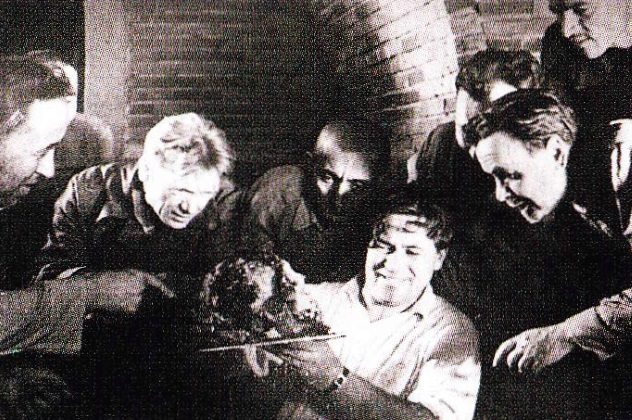
When I rise from the dead, the world shall tremble.
In June 1941, Soviet scientists Tashmuhammed Kari-Niyazov and Mikhail Gerasimov were sent by Stalin to Samarkand to exhume the body of Timur for study. The goal was basically to see if his tomb was really his tomb, what his face looked like, and if he was actually physically lame. Stalin had a morbid curiosity about the notorious warlord, as did many Russians. For centuries, Russia had suffered under and paid tribute to fearsome nomadic steppe warriors, and their histories were entwined.
The keepers of the tomb warned the team about ancient curses, but they were rudely pushed aside, and their warnings were discounted. The casket of Timur was cut from precious black jade, the largest single piece in the world. Upon its opening, a pungent, sweet smell arose, which was supposedly the smell of several curses being unleashed but was probably due to the scented embalming fluids used to preserve the remains for burial. One of the inscriptions on the inside of the tomb (in addition to the one above) said, “Whosoever opens my tomb, shall unleash an invader more terrible than I.”
The remains were carefully, but unceremoniously, packed up and prepared for flight back to Moscow. Two days later, the Germans invaded the Soviet Union, launching Operation Barbarossa.
As for the forensic findings, Timur would have dragged his right leg when he walked, and he was missing his pinky and ring fingers on his right hand. His left shoulder was higher than his right to an odd degree. Gerasimov would eventually compose a bronze bust of Timur based on the skull, which is even today a prominent representation of his likeness.
In the meantime, the German Wehrmacht had pushed all the way to the Volga River and was locked in a do-or-die last stand by the Soviets. It was the most desperate hour for Stalin and the Soviets. It should be known at this point that Stalingrad was the bloodiest battle in all of recorded history . . . not just World War II.
Stalin had chosen this time to have Timur’s remains flown back to Samarkand for reburial with full rites. He chose to have the plane carrying the historic corpse fly over the front at Stalingrad for a month before detouring back to Timur’s place of rest. The Germans surrendered at Stalingrad shortly after Timur’s reinterment.[11]
Stalingrad was the apex of Hitler’s push east, and once lost, the Wehrmacht would never regain the momentum. The Soviets would eventually push them all the way back to Hitler’s crumbling bunker walls in April 1945. Gerasimov was well-known for his forensic reconstruction of likenesses of other historical figures as well, such as Ivan the Terrible, Rudaki (founder of Persian literature), and the poet Yaroslav the Wise.
Realistically, the timing of the exhumation and the Nazi invasion seems mere coincidence, but even hard-nosed skeptics would be forced to consider some dark alternative theories to the existence of curses after reading the bloody chapter in history that is Tamerlane. If such a man can exist, and if he was allowed to commit such crimes by whatever Muslim, Christian, or Hindu god that exists, then why does the reality of a curse seem so absurd? Does there exist an evil so strong that it can radiate a curse centuries after the death of its founder?
+ An Ironic Gift To History
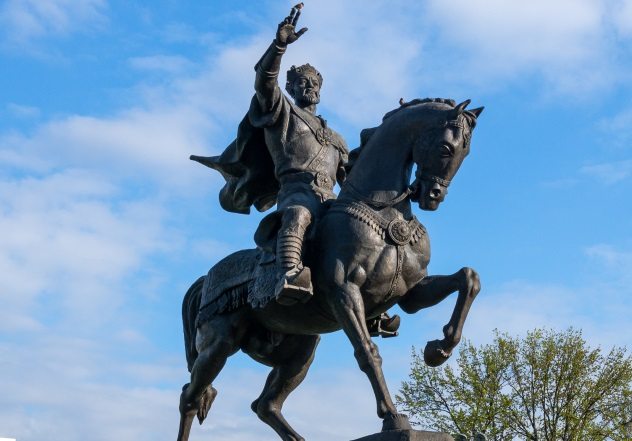
Europe’s reaction to the Battle of Ankara (Angora) was a mix of joy and dread. They were saved for the moment, but what possible chance would Europe have to defend against warriors more deadly than the Turks? At the same time, how could they not hail Tamerlane as the dark savior of the continent? Christian Europe was saved from the savage Muslims by the savage Muslims!
Poems, music, operas, and plays would be dedicated to the Muslim hero of Christendom for generations of Europeans, but the thought of Tamlerlane’s army—even more dangerous than the hated Turks, was a dreadful image to grasp.
Emissaries from all over the continent were sent to praise and appease Timur following the defeat of the Turks, and Timur himself was very warm and welcoming toward his new fans from Christianity. He warmly referred to the deeply Catholic king of Spain as “his very own son.”[12]
Timur’s shocking annihilation of the Turkish threat brought immediate relief to Europe and may have bought just enough time for the continent to build up her strength to resist future Ottoman incursions. It took the Turks years to recover from the loss, as civil wars and instability weakened their empire.
Europe was to suffer a few major setbacks after Bayezid’s downfall, in particular the fall of Constantinople, but it was able to (at least barely) stave off enough crushing losses to the Ottomans until the tide started slowly turning in Europe’s favor in the 16th century. The beginning of the end of the Turkish threat to Europe occurred when Poland saved Europe from the Turks at the failed Siege of Vienna in 1529 and when a European naval coalition sank a massive fleet of Turkish slave–run war galleons near Lepanto in 1571.
Call it an opinion, but is it not morbidly ironic that Christian Europe was saved from Islamic annihilation by the most brutal Muslim warlord who ever lived?
Beau Boivin dreams of working remote and living in Costa Rica but still awaits that one scratch-off ticket that will get him there. He is very handsome, super smart, witty, suave, and debonair. Most of all, he is very humble about these facts—just ask him! You can visit his YouTube page here . . . send him a message and be his friend—you’ll be one of the few!
Read about more historical conquerors on 10 Brutal Moments In The Conquests Of Genghis Khan and 10 Ancient Conquerors Forgotten By History.

